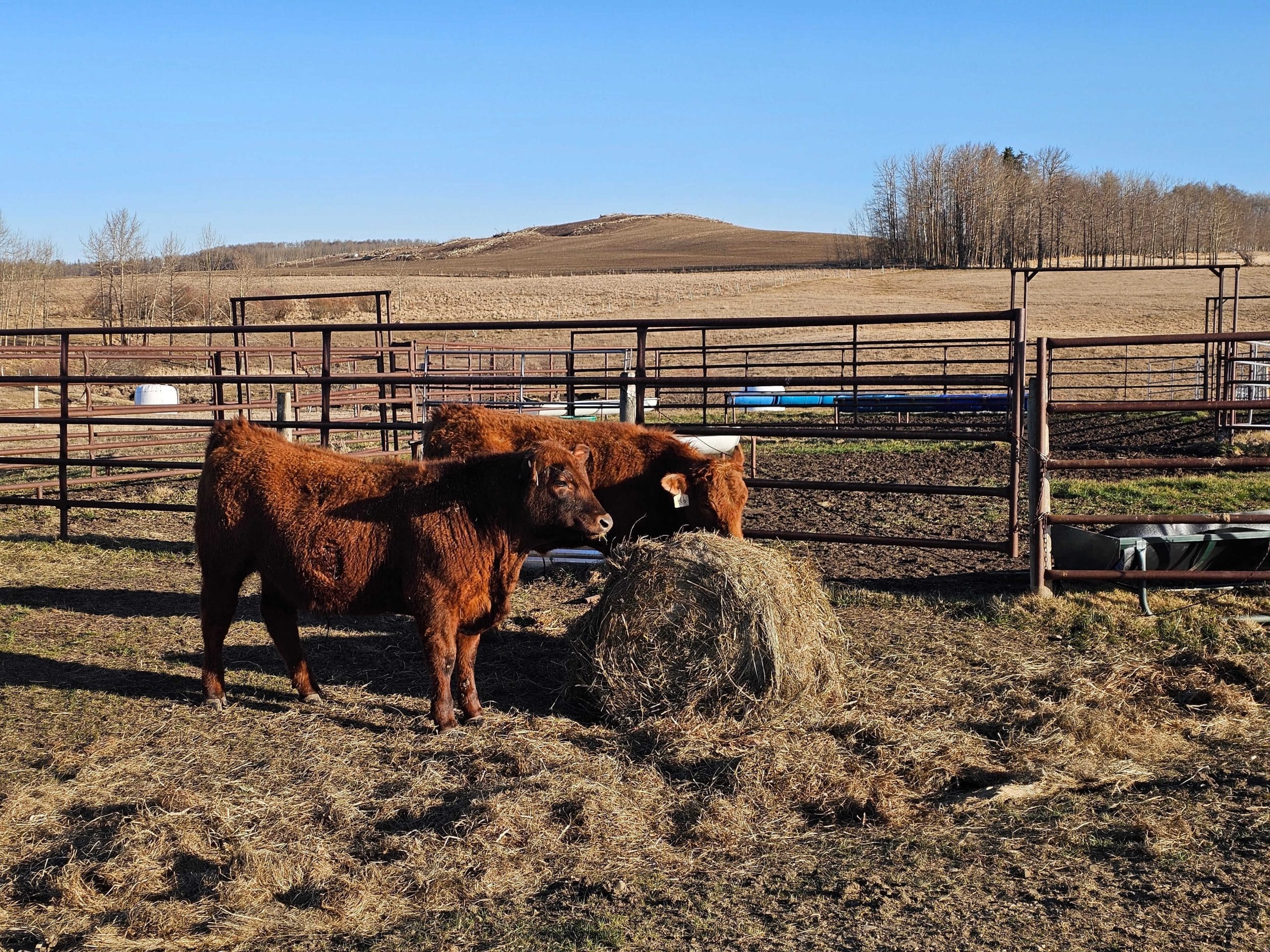- Call Us 1 306-745-2711

Wet Hay vs. Dry Hay: Which Feed Is Better for Cattle?
When it comes to feeding cattle, hay is the backbone of most operations. But one common question producers face is: wet hay vs. dry hay—which is better for your herd? The answer isn’t one-size-fits-all. The choice depends on your forage goals, storage capacity, equipment, and even the weather conditions you’re working with. Understanding the differences between wet hay and dry hay can help you maximize nutrition, reduce waste, and keep your cattle healthy.
What’s the Difference?
The key difference between wet hay and dry hay comes down to the moisture content at harvest.
- Dry Hay: Typically baled at around 15 to 18% moisture. It’s cured in the field before baling and can be stored safely with minimal risk of spoilage.
- Wet Hay (Baleage or Silage Bales): Baled at 40 to 60% moisture, then wrapped in plastic to ferment. This process preserves forage quality and reduces leaf loss, but it does require more management.
Both wet hay and dry hay come with benefits—and risks—depending on how they’re handled.
Pros & Cons of Dry Hay
Pros
- Lower risk of spoilage when stored correctly.
- Long shelf life, making it easier to feed year-round.
- Less specialized storage required (no wrapping or fermentation).
Cons
- Drying hay can be weather-dependent, especially in humid or rainy climates.
- Excessive drying time can cause leaf shatter and nutrient loss.
- Dusty or mouldy dry hay can cause respiratory problems in cattle.
Pros & Cons of Wet Hay
Pros
- Faster harvest—hay doesn’t need to stay in the field as long, reducing weather risk.
- Higher palatability—many cattle prefer fermented forage.
- Reduced leaf loss compared to dry hay, which helps maintain protein content.
Cons
- Risk of improper fermentation if moisture levels aren’t right.
- Requires wrapping, which adds cost and plastic disposal considerations.
- Shorter storage life compared to dry hay if bales are damaged or exposed.
Storage & Safety Considerations
One of the biggest risks when working with wet hay is spoilage. If your bales aren’t wrapped tightly, or if the moisture isn’t within the right range, mould can form and make the feed unsafe for your herd. On the other hand, dry hay stored with too much moisture can heat up and even combust, posing a serious fire risk.
Whether you’re working with wet hay or dry hay, it’s essential to manage your moisture levels properly.
Best Practices for Drying & Handling
If you’re leaning towards dry hay for your cattle, it’s essential that you properly rake and cure it. By moving the forage gently while it cures, you can speed up the drying time and reduce nutrient loss. This is where the right equipment comes in.
At Bridgeview Manufacturing, our hay rakes are designed to move high volumes of forage efficiently while preserving leaf quality. When paired with our bale processors, you can streamline feeding, reduce waste, and keep your cattle rations consistent. Whether you choose to work with wet hay or dry hay, the right equipment will ensure your investment pays off.
So, Wet Hay vs. Dry Hay: Which is Better?
The debate between wet hay and dry hay really comes down to your farm’s needs. If you have the storage space and need long-term flexibility, dry hay may be your best bet. That said, if you want higher feed quality, less dependence on dry weather, and a quicker harvest, wet hay may be the way to go.
Ultimately, both options provide excellent nutrition for cattle when handled correctly. The key is to manage moisture, prevent psoilage, and use equipment that helps protect your forage quality.
Bridgeview Manufacturing: Your Partner in Feed Management
Whether you’re working with wet hay or dry hay, at Bridgeview Manufacturing, we know that haying isn’t just a job—it’s the lifeforce of your operation. That’s why we design and build equipment that can handle the realities of farms across North America, including unpredictable weather, heavy crops, and the need for efficiency.
Check out our full lineup of hay rakes and bale processors, and contact Bridgeview Manufacturing for more information.
